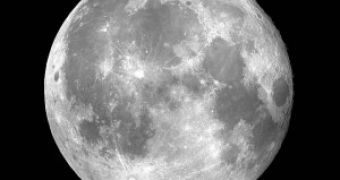Some strange and bright flashes of light appearing on the surface of the Moon have been puzzling astronomers for centuries. The first reports of bright spots and distortions on the surface that appeared with no apparent cause and disappeared again were made in 1540.
In the 1950s and 1960s, there was a huge interest for these strange phenomena and even Apollo astronauts claimed to see a few. Now, a scientist is proposing a theory that could explain what they are and why they faded anywhere from a minute to a few hours later.
"People have been wondering about this for hundreds of years, to the point where they've given up on it," says astrophysicist Arlin Crotts of Columbia University. He claims that the observed flashes are in fact emissions of volcanic gas, what he calls "lunar transients," believed to appear only in areas of the moon that belch radon gas, suggesting that the flashes could be the result of dust stirred up by such emissions-possibly volcanic in origin.
The Moon has an atmosphere so thin as it seems almost negligible. One source of the little there is comes from outgasing - the release of gases such as radon that originate by radioactive decay processes within the crust and mantle.
This is what Crotts believes to be producing the "UFOs" seen from space and from Earth. Volcanic gas escapes from the interior of the Moon to the surface, where it builds up in a sort of bubble, under the fine soil and finally erupts, stirring a cloud of dust visible from Earth using optical telescopes.
"A lot of people think that this is just craziness-this is up there with UFOs," says astrophysicist Arlin Crotts of Columbia University. "But no, this is real science. And it's something people should have done 30 years ago."
Some astronomers do not agree with this theory, saying that it's "mostly correlations equals causation," (astrophysicist Paul Spudis of the Johns Hopkins University Applied Physics Laboratory) but they admit it's an intriguing proposition that is worth studying.

 14 DAY TRIAL //
14 DAY TRIAL //